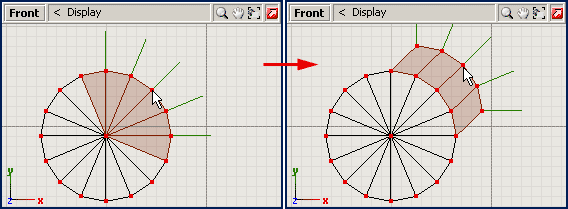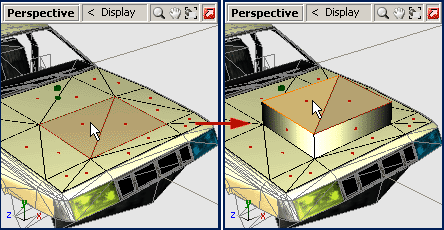

Once again, I mention that unwrapping straightness and accuracy is not must. But this task is usually of no problem to the users. Of cause, you should apply prelit vertices color too, so the model is not that bright. Now we have a model with baked AO texture on it. When everything is set up, make a final render on higher resolution with maximum rays count. You can make a draft render on smaller texture with few rays emitted. Most of the settings are set properly already. Move on to AO baking (Render to texture).

You will need to pack many charts onto a texture. I resize the only unwrapped fragment I've got to occupy an entire texture. Move them aside and resize while working so your workflow is straightward and fast. It will not be the single chart of cause, do it the way you like, as much charts as needed. You will need to unwrap an entire cabin of cause. I've made the back side only, the rest is of no interest for this video.

The fragment on the other side is exactly the same in workflow. Undo and refine the vertices on this row until the stitched element apperas properly. After stitching I see the bottom row I've edited is way too wide. Slightly tapered, the stitch will fix it. These should not be of much problem, will try to unwrap them at once too. there is no need to make it super straight and super fine and accurate. Again, I do it fast and inaccurate.because there will no be other charts stitched below this fragment. It's a time to refine mapping chart on vertices level. For example, its clearly seen the distortion is accumulating and line has bended lines over here.

If you see certain framgent unwrapped badly, undo and unwrap smaller fragment, just a row of polygons or smaller charts, the way you find suitable. For the sake of quickness, I unwrap it all at once. Here's the most problematic fragment: this line with "boxy teeth" on it. You can work with non-commited charts, so you can refine them interactively by adding more control points (pins). It's slightly unsymmetric, but stitching will fix it. Central big fragment could be unwrapped as a whole (it comes out pretty fine, I've checked it already). Hide polygons that has a mapping generated. I select them all and use Commit, so I could refine them on vertices level directly. Ensure they lay properly with no overlaps. Select all polygons of inner fragments, they will unwrap and stitch perfectly. I shall stitch neighbor fragments to this cart, so it will grow slowly. I start with the biggest and, the most importent, the element that is flatten already! New mapping is generated using Unwrap method Unwrapping flatten geometry produces a pretty accurate chart. It's preferable to use Select\Separated tool for selection and deselection. Disable "Diffuse Color" in vertices format too. Remove current UV mapping from the object. I'll create mapping for the back fragment of this cabin. Set the black color for Specular And reduce reflections down to zero So, material is a gray matte plastic now. I turn off custom diffuse colors on original material. I'll work on a back side of the Scania cabin model. This video guide will show the overal workflow of unwrapping and baking AO texture in ZModeler3.


 0 kommentar(er)
0 kommentar(er)
